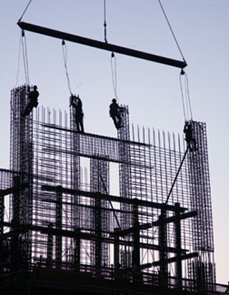 Michael Moore / ENR
|
As economists warn of tough times ahead amid rising oil costs and the weakening U.S. dollar, the fallout from ongoing inflation is being felt across the industry as highway, commercial and power projects are being delayed, scaled-back or abandoned. World materials demand coupled with record fuel costs are ratcheting up cost indexes.
“It’s really brutal,” says Ken Simonson, economist at Arlington, Va.-based Associated General Contractors. In a Construction Inflation Alert issued by AGC this month, Simonson predicts a 6% to 8% increase in construction costs this year, following two years of double-digit cost increases. Steel, copper and paving asphalt will rise this year, and “it will be a particularly difficult year for diesel, which is up about 55% over last year,” he says. High oil prices will particularly hurt state transportation departments, as highway construction costs have jumped 49% over the past year.
Stunned by sticker shock as paving costs rocket, states are scaling back programs and opting to maintain rather than resurface roads. “We rely on federal funds, and with costs going up it just isn’t enough,” says Paul Knofczynski, bid letting engineer at South Dakota Dept. of Transportation. “We’ve had to drastically reduce our paving and instead do a lot of chip seal.”
Last year, for the first time, SDDOT instituted a contract escalation clause for fuel to keep projects viable for bidders. “Fuel prices are by far the biggest problem,” says Knofczynski.
Some states are raising tolls or gas taxes to fund projects, while others juggle priorities and trim programs. In Washington state, steel costs forced officials to forego several major road projects in order to fund a $4.38-billion bridge replacement on Highway 520 near Seattle after material and labor costs soared. Other projects are stalled as funds dwindle under fuel and asphalt costs.
A project to repair and resurface a 50-mile road that cuts through Glacier National Park in Montana has been delayed indefinitely as federal highway officials redesign the project, citing budget concerns. Planned in 2003 to cost about $140 million, “costs have essentially doubled,” says Amy Vanderbilt, spokeswoman for National Park Service. Federal Highway Administration cost estimates were based on a 4% annual cost increase derived from the consumer price index, but construction costs have significantly outstripped the CPI, says Vanderbilt. “Everyone used to estimate budgets based on CPI, but construction costs have risen about 30% in the past five years, while the CPI has increased only 15%,” says Simonson.
The power sector is hard hit. According to Cambridge, Mass.-based Cambridge Energy Research Associates, the cost of new powerplant construction increased 27% in the past year and 19% in the most recent six months.
“These costs are beginning to act as a drag on the power industry’s ability to meet growing demand, leading to delays in the building of new plants,” says Candida Scott, lead researcher at CERA. “As the cost of construction rises, firms may become reluctant to invest.”
Many contractors and developers in the commercial and retail sectors are stuck holding the bag as construction inflation has zoomed past rental income. “We can’t pass that on,” says Anthony Dolan, partner at Pittsburgh-based developer Walnut Capital Co. Focused on mixed-use, apartments and retail markets, Dolan says rising costs of fuel, copper and stucco, among others, have hurt profits. “In 2003, we could build for $53 per sq ft, but now it’s more like $86 to $90 per sq ft,” says Dolan.
 Related Link:
Related Link: 